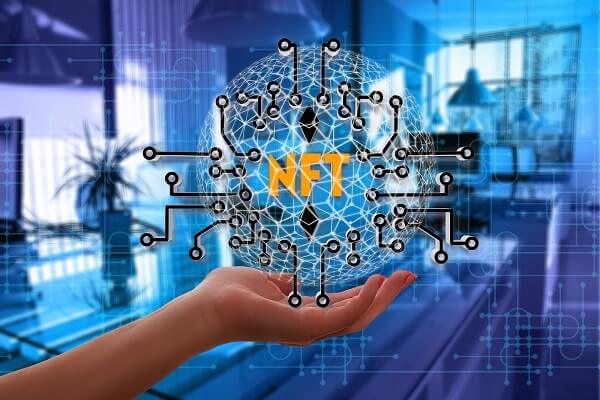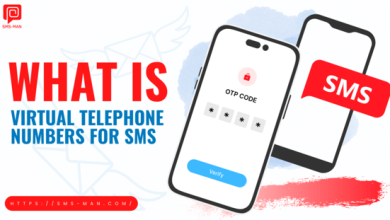The Role of NFTs in the Metaverse

Byline: Becky Moore
A network of 3D virtual worlds called the Metaverse allows users to play games, work together, collaborate, and participate in live events. It not only resembles our physical world as an idea of a parallel universe, but it also imagines ways to combine with it to provide limitless immersive experiences.
This vision, which has not yet been fully realised, will be supported by various technologies. Blockchain augmented, virtual reality, 5G, artificial intelligence, and the internet of things are just a few.
For these technologies to converge, NFTs are essential. Innovative businesses have already begun to grasp the potential of NFTs by incorporating them as various types of digital assets into their metaverse ventures.
NFTs are fundamentally about establishing digital scarcity and worth and demonstrating ownership. You can create and own anything with NFTs, from pricey animations like the Nyan Cat to virtual real estate in games like Decentraland. It’s challenging to authenticate or assert ownership over anything that anyone can easily screenshot, duplicate, or download in today’s ever-expanding digital world.
Metaverse Projects
There’s no doubt that NFTs are becoming increasingly popular in all areas, while they still receive the majority of coverage due to their use as exclusive treasures in the art world. NFTs, however, are not all made equal.
The Merge, a digital piece by unidentified artist “Pak,” is the most expensive NFT ever sold. On December 6, 2021, it was sold on the decentralised market Nifty Gateway for $91.8 million. Even though this sale was extremely high, 50% of all reported sales on OpenSea, one of the largest NFT marketplaces, in the previous six months were under $200, and that’s before fees.
This was when Metaverse projects became increasingly popular, with many collections becoming part of the top-selling NFT projects Biticodes.
Digital lands
In other words, virtual lands make up the digital real estate that makes up the metaverse. These virtual territories are offered for sale as NFTs by blockchain metaverse initiatives like Decentraland or the Sandbox.
Buyers are given ownership of these lands through NFTs, which act as deeds. Owners have ownership over their assets, and they gain several financial benefits.
For instance, landowners can profitably sell their assets on NFT platforms like OpenSea. Some metaverse initiatives also let people rent out the land. For instance, by renting their properties to game developers, Sandbox landowners can generate passive income. They can also make their games receive money when other players come to their lands and play their games.
Having access to special events
Tickets for special metaverse events like concerts or art exhibits can be obtained using NFTs.
In the Decentraland metaverse, these token-gated events are popular. One such special event was the Halloween gathering that the Deadfellaz collecting crew staged. Only those holding a Deadfellaz or a Steve Aoki NFT were allowed entry to the party, which was hosted in collaboration with the well-known DJ.
NFT Avatars
A digital representation of yourself called an avatar is used to enter a metaverse. It’s not required that your avatar is an NFT. However, if it is, it will be uniquely yours.
The well-known profile picture (PFP) NFT projects that garnered media attention in recent years, such as the Bored Ape Yacht Club and CloneX NFTs by RTFKT, are evolving into metaverse avatar projects. Shortly, owners of these distinctive digital NFT arts will be able to turn their profile photos into 3D avatars.
Fashion NFTs
One more current matter is that digital fashion is closely tied to NFTs in the metaverse. People are very interested in showcasing their distinctive styles in the digital sphere. Thus this is a significant sector.
There have already been numerous partnerships with well-known brands in this area. A notable collaboration involved the sportswear company Adidas, the NFT juggernauts BAYC, and Punks Comic, resulting in a collection of 30,000 NFT editions.
Stephen Curry, a well-known basketball player, and Under Armour collaborated on another NFT fashion project. The NFTs were digital replicas of Curry’s sneakers, which he wore when he broke the all-time NBA record for three-point shots. The group was known as Genesis Curry Flow.
Play-to-Earn NFT games
Metaverse projects revolve around games. Play-to-Earn (P2E) models have attracted players worldwide since they provide both financial rewards and enjoyable experiences. The in-game items in these games, such as skins, swords, and heroes, are all NFTs. Because of this, unlike traditional video games, their purchasers own them.
P2E games are essential for the metaverse’s general adoption. It’s hardly surprising that tech-savvy players who have already interacted with metaverse-like gaming settings, such as those seen in Axie Infinity, Illuvium, and Star Atlas, are now creating their metaverses.
The main business opportunity for NFTs is enabling the emerging economies of the metaverse, some of which are listed below. You will be able to purchase interoperable digital things in a virtual environment thanks to NFTs. It strengthens your “crypto wallet,” which you use to store your digital items exclusive to the metaverse, including your avatars, clothing, animations, virtual accents, and weaponry. NFTs will be yours not just in the physical world but also in the digital one.





